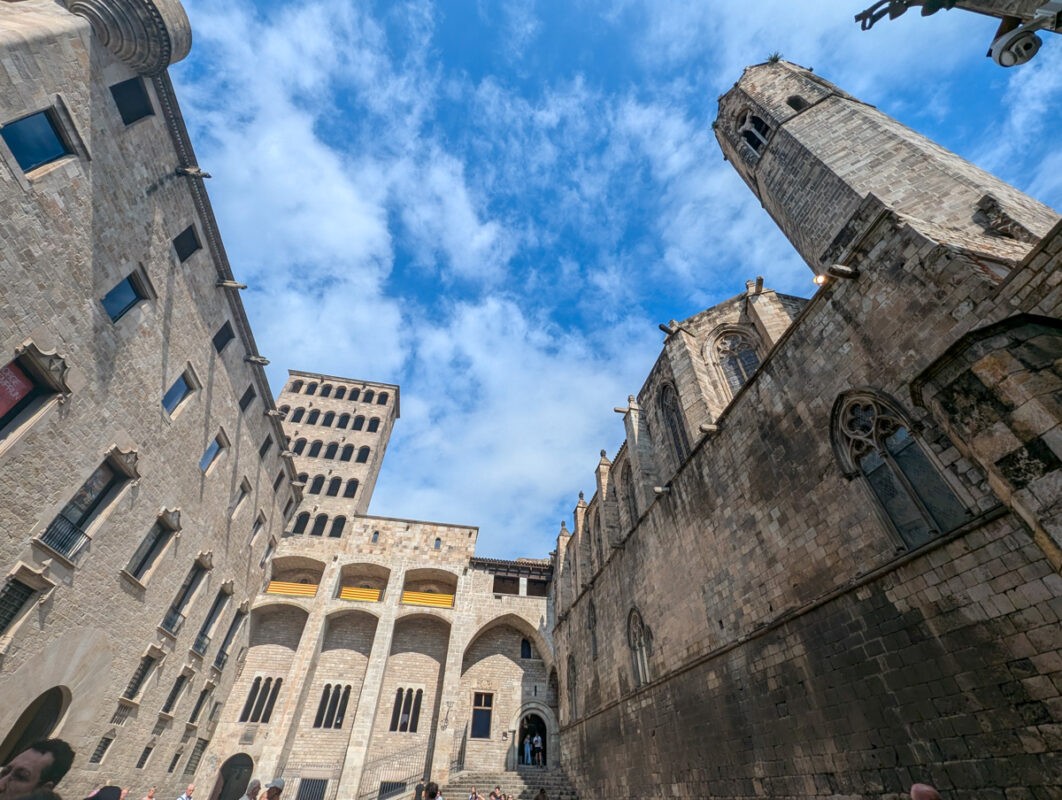I recently spent two days in Barcelona, a city that’s suffering badly from over-tourism.
There have been protests against mass tourism this year, and Airbnbs are being banned in the city.
I set out to do some research: should we still be visiting Barcelona?
Although there have been protests, there are also hundreds of thousands of people employed in the tourist industry and thousands of tourist-focused businesses.
I don’t believe that NO tourism is the answer – so here are some ways we can be more responsible tourists in Barcelona and elsewhere in Europe.
Here are some tips!
This post may contain affiliate links.
DON’T feel like you need to miss all the popular attractions, but do so respectfully

Barcelona is world-famous for its Gaudi architecture – and this is why many people come to the city.
Sustainable travel isn’t about not visiting, it’s just about doing it sustainably.
La Sagrada Família, one of Barcelona’s most iconic landmarks, often draws overwhelming tourist crowds.
While the intricate design and ongoing construction of Gaudí’s masterpiece are fascinating, the best views are actually from a bit of a distance!
If you’re looking to avoid queues and the €26 entrance fee, admire the basilica’s architecture from nearby spots like Plaça de Gaudí, where the full scope of its towering spires is visible.
If you are visiting, remember that it is a basilica, so behave appropriately and don’t wear anything too immodest (the official website recommends covering shoulders and knees).
See all of my tips for La Sagrada Família here.
La Pedrera, also known as Casa Milà, is one of Gaudí’s most famous but unfinished works.
Unlike the Sagrada Família, this building has a more subdued presence – but its undulating stone façade stands as a testament to Gaudí’s visionary design.
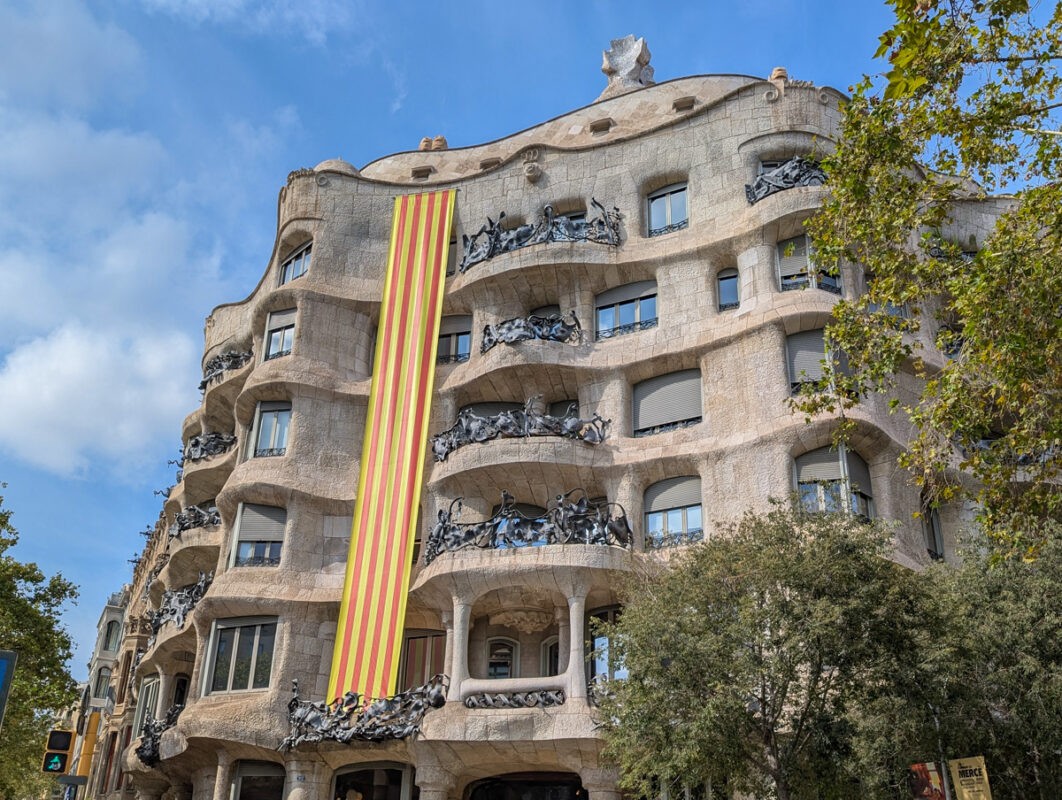
It’s easy to admire from the outside, but the rooftop boasts incredible views if you choose to explore further inside!
A short walk from La Pedrera, Casa Batlló is one of Gaudí’s most colourful and surreal masterpieces. With its skeletal balconies and dragon-like scales, it’s hard to miss, but it’s also one of the busiest tourist spots in the city.

Visiting early or late in the day can make both Casa Batlló and Casa Milà more enjoyable, or simply take in its unique exterior from across the street.
Find hidden spots in the Medieval Jewish Quarter

Just steps away from bustling tourist streets, the Jewish Quarter feels like a different world.
You can enjoy a quieter side of Barcelona by roaming these streets!
One of Barcelona’s oldest neighbourhoods, it’s home to the ancient Sinagoga Major, dating back to the 2nd century.
Look out for the small Christian saint statue above the synagogue, a relic from the Spanish Inquisition, which reveals a deeper layer of the city’s complex past.
Plaça Reial is home to some of Gaudí’s earliest works—specifically the lamp posts.
This central square, inspired by Madrid’s Plaza Mayor, is a hub of activity. Look beyond the surface, though, and you’ll discover that these lamp posts marked the beginning of Gaudí’s legacy in Barcelona.
Visit underrated areas like Poblenou
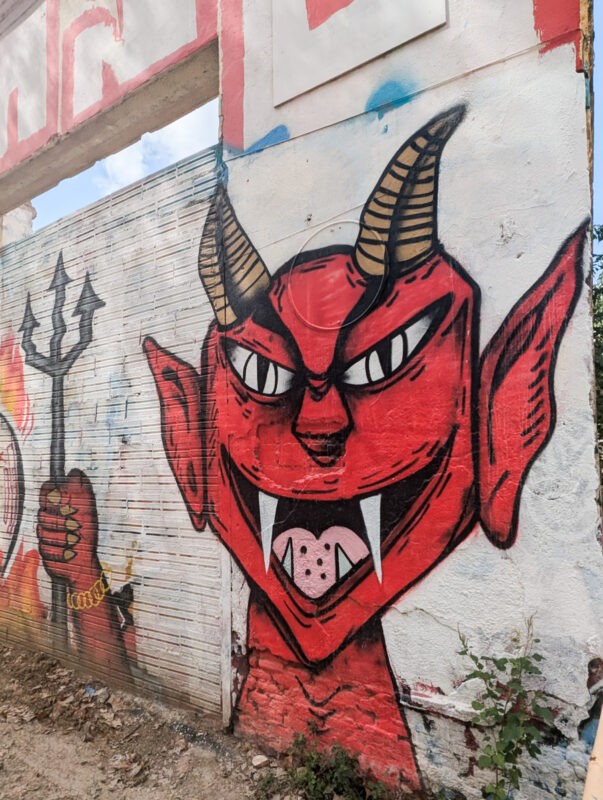
Poblenou is a neighbourhood with an alternative vibe and far fewer tourists.
Street art covers many walls in this area, so a simple stroll is an art tour in itself.
The places I visited in Poblenou (Google map locations) were:
I found a Get Your Guide tour that visits lots of the underrated areas of Barcelona by bike, including Poblenou – check it out here.
Head to the lesser-visited beaches

Barceloneta Beach is a hotspot for tourists, but if you’re looking for a quieter beach experience, walk a little further north to Platja de la Mar Bella or Platja del Bogatell.
Both beaches boast the same golden sands and refreshing waters but with significantly fewer people, making them perfect for a relaxing day by the sea.
Avoid chain coffee shops and restaurants
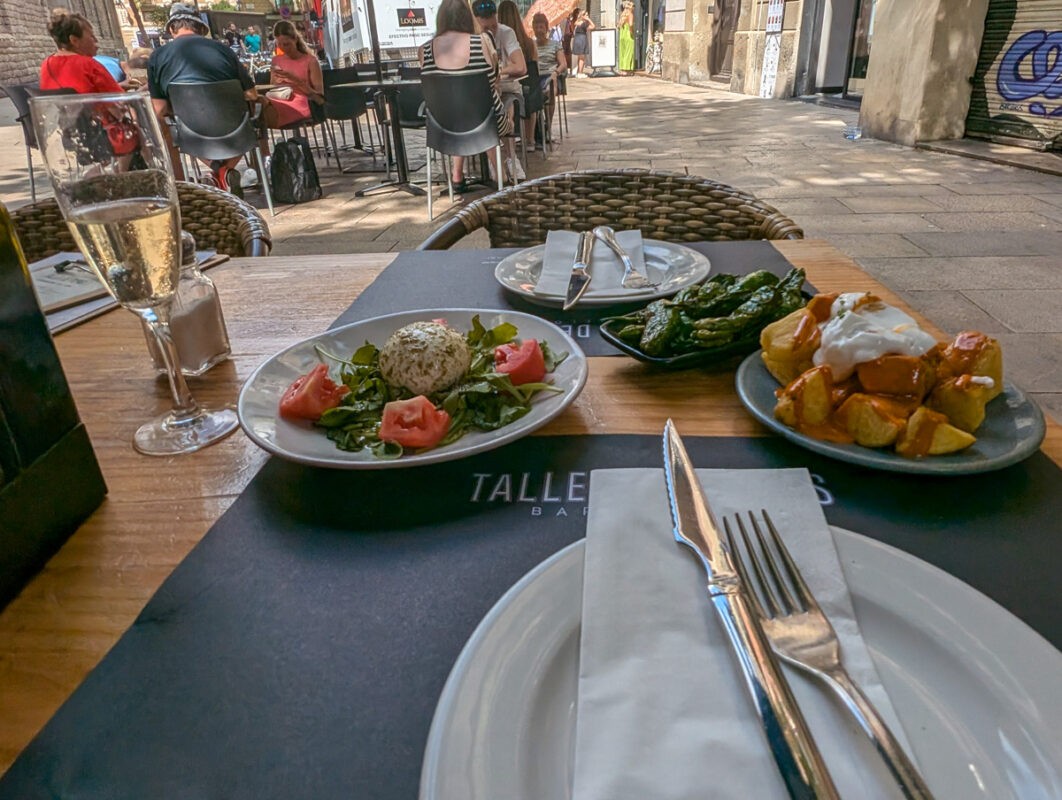
One of the best ways you can be more sustainable is to avoid chain coffee shops and restaurants and favour local spots instead. Here are the independent venues I visited while I was there (click for Google Maps links).
- Taller de Tapas: Tapas restaurant in the Gothic Quarter.
- Perikete: Local feeling bar and tapas restaurant in Barceloneta.
- Blackbird Coffee Corner: Wonderful coffee restaurant near La Sagrada Familia.
- Ombú Cafè: Poblenou cafe serving up delicious coffee nad pastries.
Stay local
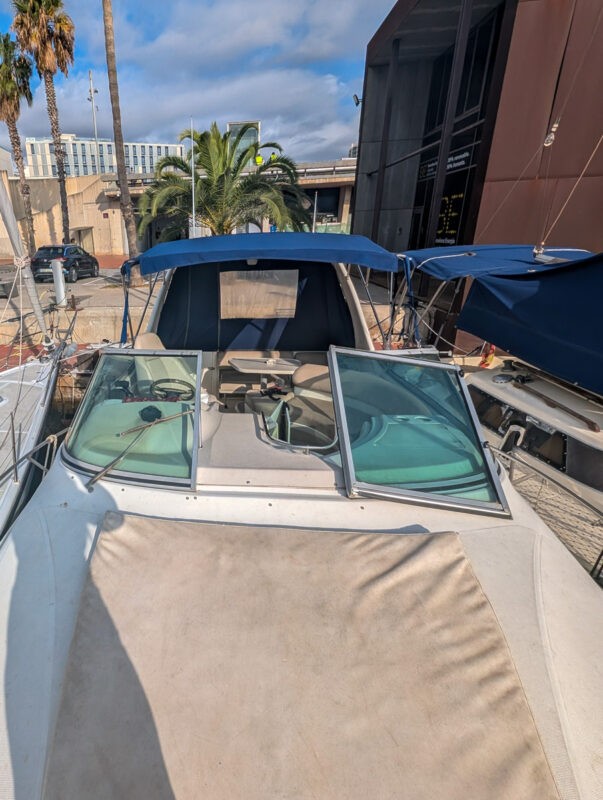

Opt for locally owned guesthouses or smaller hotels rather than Airbnb rentals, which have been linked to the city’s housing crisis.
Many guesthouses offer affordable and authentic accommodations that don’t displace residents.
Here are the two places I stayed at in Barcelona. Click on the name to go to its Booking profile.
- Pensión Teruel: This was the cheapest place I found in Barcelona city centre on night one – it was a locally run guesthouse and I found the bedroom to be clean, but the shared bathroom less so! I made a full YouTube review here.
- Boat Hotel Barcelona: This self-contained boat is located in Port Forum. It has two beds, a dining area, toilet and plenty of outdoor space to relax!
Walk or use public transport
Barcelona’s extensive metro and bus system makes it easy to avoid taxis or rental cars. It’s easy to use – you can buy a ticket on the machine in English!
Walking is also a great way to discover the city’s hidden gems while reducing your carbon footprint!

